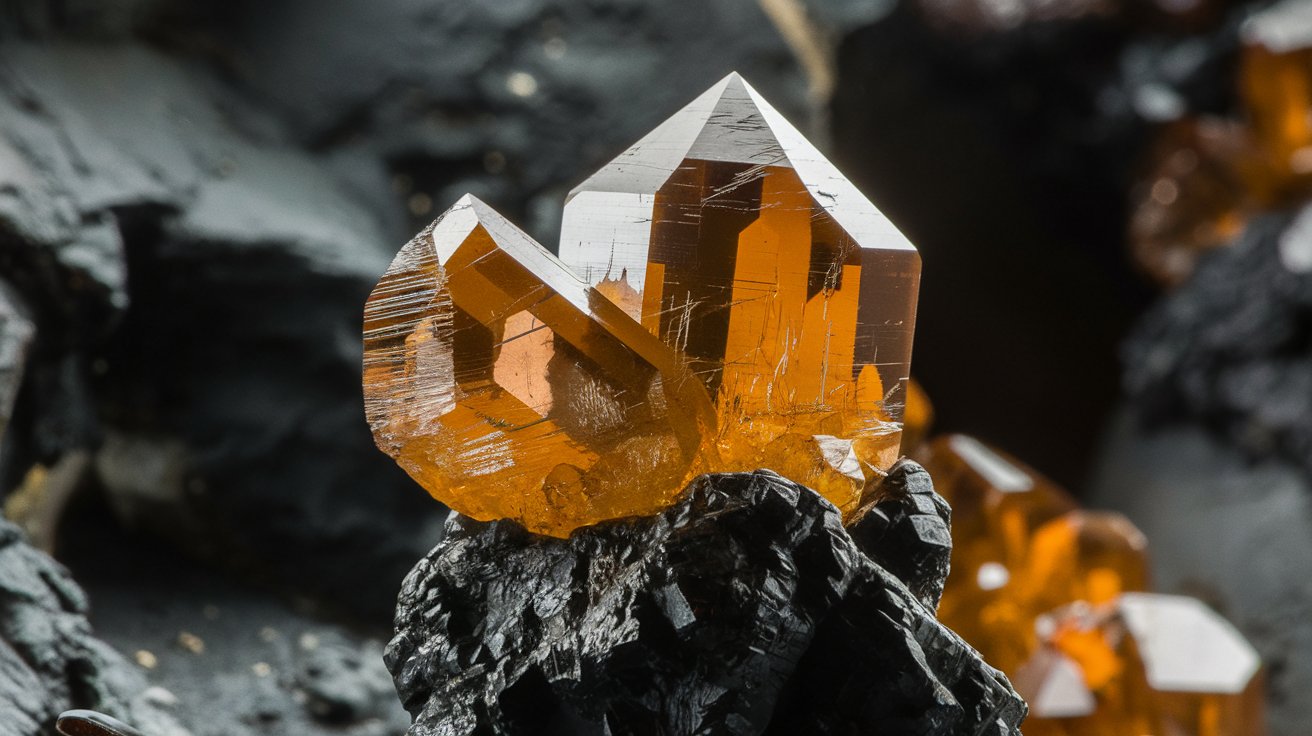
Skaergaardite is a rare and fascinating mineral that captures the interest of geologists and mineral enthusiasts alike. Found primarily in the Skaergaard intrusion in Greenland, this mineral is known for its unique properties and composition. But what makes skaergaardite so special? For starters, it contains a mix of platinum group elements, which are highly valuable and sought after. Additionally, its formation process offers insights into the geological history of our planet. In this blog post, we'll explore 25 intriguing facts about skaergaardite, shedding light on its origins, characteristics, and significance. Whether you're a seasoned geologist or just curious about minerals, these facts will provide a deeper understanding of this remarkable substance.
Key Takeaways:
- Skaergaardite is a rare and valuable mineral found in igneous rock formations, offering insight into Earth's geological processes and potential for industrial use.
- Mining skaergaardite can provide valuable resources, but it also requires responsible environmental management to minimize habitat destruction and ecological impact.
What is Skaergaardite?
Skaergaardite is a rare mineral that has intrigued scientists and collectors alike. Found in specific geological settings, this mineral offers a glimpse into the complex processes that shape our planet.
- Skaergaardite is named after the Skaergaard intrusion in Greenland, where it was first discovered.
- It belongs to the platinum group minerals, making it highly valuable.
- The mineral's chemical formula is (Pd,Pt)Cu, indicating it contains palladium, platinum, and copper.
- Skaergaardite forms in layered mafic intrusions, which are large, layered igneous rock formations.
- It was officially recognized as a mineral by the International Mineralogical Association in 2003.
Geological Significance
Understanding the geological context of skaergaardite helps us appreciate its rarity and formation.
- Skaergaardite is often found in association with other platinum group minerals like cooperite and braggite.
- The Skaergaard intrusion, where skaergaardite was first identified, is one of the world's most studied layered intrusions.
- This mineral forms at high temperatures, typically above 1000°C.
- Skaergaardite is usually found in the lower zones of layered intrusions, where the concentration of platinum group elements is higher.
- The presence of skaergaardite can indicate the potential for other valuable minerals in the area.
Physical Properties
Skaergaardite's physical characteristics make it unique and distinguishable from other minerals.
- It has a metallic luster, giving it a shiny, reflective appearance.
- The mineral is opaque, meaning light does not pass through it.
- Skaergaardite has a hardness of 4.5 on the Mohs scale, making it relatively soft compared to other minerals.
- Its color ranges from silver-white to steel-gray.
- The mineral has a cubic crystal system, which means its crystals form in a symmetrical, cube-like structure.
Economic Importance
The economic value of skaergaardite cannot be overstated, especially in industries relying on platinum group elements.
- Skaergaardite is a source of palladium and platinum, both of which are used in various industrial applications.
- Palladium from skaergaardite is crucial in the automotive industry for catalytic converters.
- Platinum extracted from skaergaardite is used in jewelry, electronics, and medical devices.
- The rarity of skaergaardite makes it a sought-after mineral for collectors and investors.
- Mining operations targeting skaergaardite can also yield other valuable minerals, enhancing the economic viability of such projects.
Environmental Impact
Mining skaergaardite, like other minerals, has environmental implications that need consideration.
- Extracting skaergaardite can lead to habitat destruction if not managed properly.
- The mining process can produce waste materials that need to be handled responsibly to avoid environmental contamination.
- Sustainable mining practices are essential to minimize the ecological footprint of skaergaardite extraction.
- Reclamation efforts can help restore mined areas, promoting biodiversity and ecological balance.
- Ongoing research aims to develop more eco-friendly methods for extracting and processing skaergaardite.
Skaergaardite: A Rare Gem in the World of Minerals
Skaergaardite, a platinum group mineral, is a true marvel. Found in the Skaergaard intrusion in Greenland, this mineral is incredibly rare. Its unique formation process and scarcity make it a subject of fascination for geologists and mineral enthusiasts alike. Skaergaardite's discovery has provided valuable insights into the geological processes that shape our planet. Its rarity also makes it a prized specimen for collectors. Understanding skaergaardite helps us appreciate the complexity and beauty of Earth's geological history. Whether you're a seasoned geologist or just curious about the natural world, skaergaardite offers a glimpse into the intricate and awe-inspiring processes that occur beneath our feet. So next time you think about minerals, remember skaergaardite and its unique place in the world of geology. It's a small but significant piece of Earth's vast and varied tapestry.
Frequently Asked Questions
Was this page helpful?
Our commitment to delivering trustworthy and engaging content is at the heart of what we do. Each fact on our site is contributed by real users like you, bringing a wealth of diverse insights and information. To ensure the highest standards of accuracy and reliability, our dedicated editors meticulously review each submission. This process guarantees that the facts we share are not only fascinating but also credible. Trust in our commitment to quality and authenticity as you explore and learn with us.
